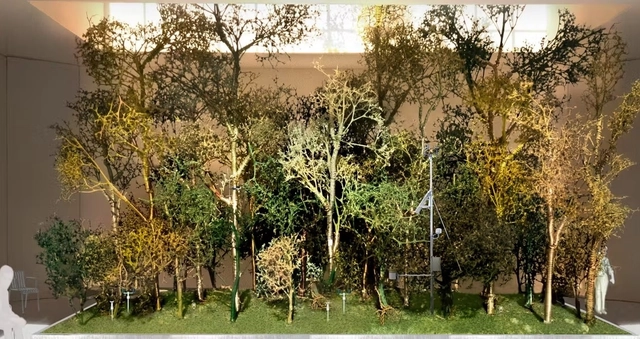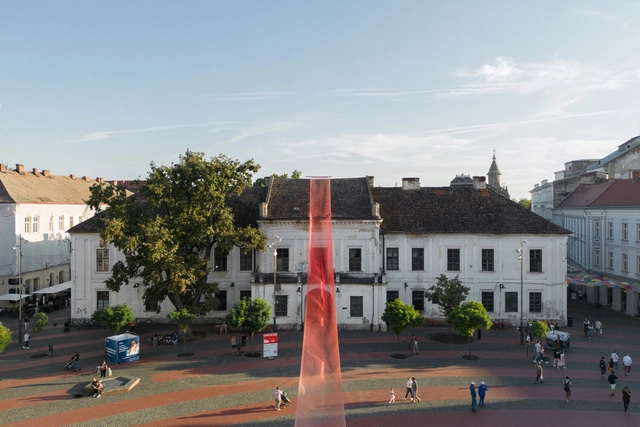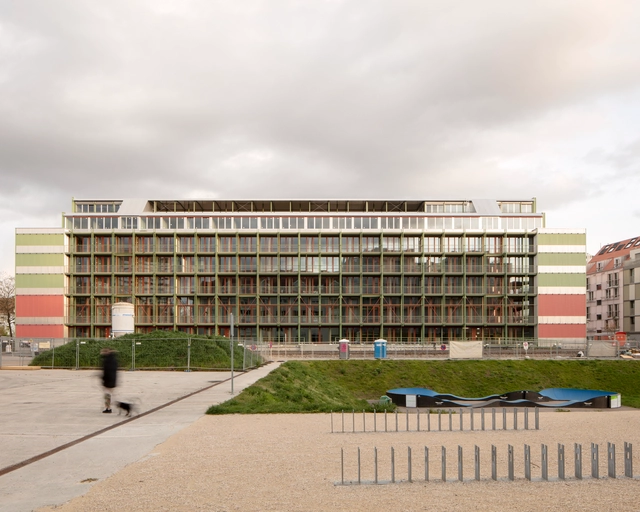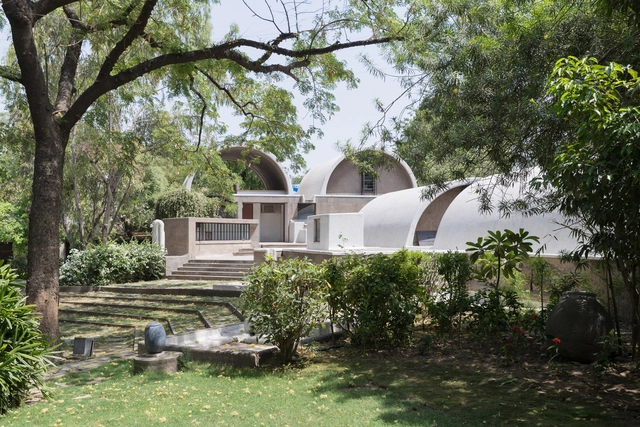The 2025 Venice Architecture Biennale, titled Intelligens. Natural. Artificial. Collective. and curated by Carlo Ratti, has just opened for previews. Following the public opening on Saturday, May 10, the exhibition will run through November 23, 2025. While on site in Venice, ArchDaily had the chance to meet with the curator Carlo Ratti to discuss the first impressions and the main themes of this edition of the Biennale. Featuring 65 national pavilions, 11 collateral events, and over 300 contributions from more than 700 participants, the 2025 Venice Architecture Biennale is set to be the largest in the Biennale's history.
Architecture curators: The Latest Architecture and News
Sharjah Architecture Triennial 2026 Announces Vyjayanthi Rao as Curator of Third Edition

The Sharjah Architecture Triennial has announced Vyjayanthi Rao as the curator for its third edition, scheduled to take place in 2026. Rao, an anthropologist, writer, artist, and curator based in New York and Mumbai, will be joined by Tau Tavengwa, curator from London and Cape Town, as associate curator.
U.S. Pavilion at 2025 Venice Architecture Biennale Showcases ‘PORCH: An Architecture of Generosity'

The Fay Jones School of Architecture and Design at the University of Arkansas, in collaboration with DesignConnects and the Crystal Bridges Museum of American Art, has been chosen by the U.S. Department of State's Bureau of Educational and Cultural Affairs to represent the United States at the 2025 Venice Architecture Biennale. The selected theme, "PORCH: An Architecture of Generosity," explores the timeless architectural and cultural significance of the American porch, showcasing its continued relevance as a space for connection, inclusivity, and civic engagement.
The Belgian Pavilion Explores Plant-Based Architecture at the Venice Biennale 2025

The 19th Biennale Architettura, set to open in Venice in May 2025, will see the Belgian pavilion transformed by an exhibition titled "Building Biospheres," curated by a team comprising landscape architect Bas Smets and biologist Stefano Mancuso. Initiated by the Flemish government and the Flanders Architecture Institute, this thought-provoking exhibit will explore a transformative approach to architecture through the lens of plant intelligence.
The Türkiye Pavilion Presents “Grounded” Exhibition at the 2025 Venice Architecture Biennale

Commissioned by the Istanbul Foundation for Culture and Arts (İKSV), the Türkiye Pavilion presents the exhibition titled "Grounded" at the 19th International Architecture Exhibition of La Biennale di Venezia in 2025. Curated by Ceren Erdem and Bilge Kalfa, the project explores soil as a medium that carries both ecological and cultural memory, presenting it as an active ecosystem with the capacity to store and transmit information. Based on research, the project uncovers new possibilities that integrate diverse artistic and interdisciplinary perspectives. Curators invite visitors to reconsider their relationship with nature and to engage with the complexity and significance of the ground beneath their feet. The exhibition features contributions from 10 individual participants and 10 collaborative teams, alongside a selection of works chosen through an open call.
Beta Architecture Biennial 2024 Opens in Timișoara to Explore Concepts of 'Cover' and Originality

In Timișoara, Romania, Beta Architecture Biennial opens to the public today, September 13, under the curatorial direction of Oana Stănescu. Now in its 5th edition, thus celebrating 10 years since its inauguration, the 2024 biennial proposes a wide-ranging program of debates, exhibitions, guided tours, and artistic performances. The two main components of the biennale are the Main Exhibition, cover me softly, led by Stănescu, and the Beta Awards, aiming to highlight architects and professionals from Romania, Hungary, and Serbia who actively contribute to the improvement of the built environment. The biennale is open between September 13, and October 27, 2024.
ArchDaily Curator's Picks 2023: Global Projects our Curators Highlighted Through the Year

The ArchDaily projects library is managed by our curators who constantly seek to populate our stream with the most interesting global works, showcasing evolving focuses and criteria. While we usually share our reader’s top 100 favorites, this year, we also decided to initiate our editor’s picks on the ArchDaily Instagram account, where our curators highlight some projects that include interesting themes and unique traits.
A Look Back at the 18th Venice Architecture Biennale, the First to be Focused on the Culture of Africa

The 18th International Architecture Exhibition of La Biennale di Venezia closed on November 26th. A total of 285,000 people visited the exhibition, making it the second most highly attended Architecture Biennale in its history. Named "The Laboratory of the Future," this edition led by curator Lesley Lokko, has been the first to focus on Africa and its diaspora, exploring the “fluid and enmeshed culture of people of African descent that now straddles the globe,” in the words of the curator, with themes of decolonization and decarbonization.
This edition has attracted a wide array of visitors, 38% of whom are represented by students and young people. Visitors organized in groups represented 23% of the overall public, with a large majority of groups coming from schools and universities. The numbers denote an event centered on the transmission of knowledge and circulation of ideas.
On-Site in Venice: 12 Interviews with Curators Discussing the Impact of the 2023 Venice Architecture Biennale

While exploring the 18th International Architecture Exhibition, the ArchDaily team had a chance to engage in conversation with several curators of the national pavilions, along with Lesley Lokko, the curator of the entire exhibition. The discussions delved into the unique character of this year’s edition focused on an understanding of Africa as a “Laboratory of the Future.” Through this lens, the biennale became “a healing experience,” in the words of Lesley Lokko, reinterpreting and deconstructing the meaning behind ideas such as decolonization, decarbonization, resource management, or finding the hidden potential in vernacular forms of practice.
Following Lokko’s curatorial direction, the exhibitions presented at the national pavilions explored the specific conditions of their territories, striving to uncover and highlight the unique challenges and opportunities faced by their local cultural landscapes. During the interviews, the curators opened up in regard to their personal inspirations and the drive behind the choice of program, the messages embedded in the displays, and their hopes for the future of the profession.





















































































